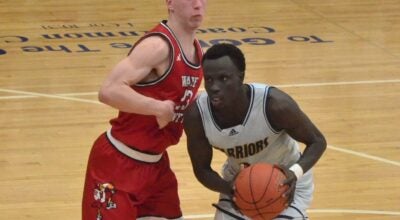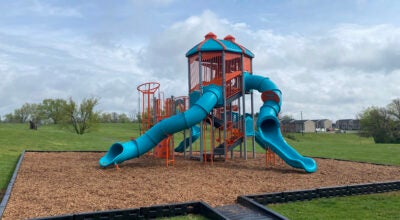K9 Corner
Published 8:14 am Tuesday, March 28, 2017
By HELEN PALMER
I’ve been asked, “How do guide dogs learn to guide the blind?
In some dog training schools for the blind, it starts with a selective breeding program. Once the puppies arrive, they are evaluated for intelligence, stamina, bone structure and temperament. The most promising are sent to foster homes for a year of early training.
In some of the blind guide schools, these puppies are sent to 4-H homes where the 4-H member pledges to train and socialize the pup for the next year and then return it to the school for advanced training.
The 4-H student first housetrains the pup and then teaches it to accept a collar and leash. As the puppy grows the young trainer encourages the dog to walk ahead, but not to pull, jump or try to chase a squirrel. The dog is going to be some human’s eyes and needs to practice undivided attention when out for a walk. No games allowed!
The pup learns not to jump on the furniture and to lie quietly beside the trainer’s chair during mealtime. The animal sleeps on the floor at the foot of the trainer’s bed and is crate trained at an early age. The pup must also learn to accept a muzzle too.
After the first set of preventative shots, the pup starts its socialization program, first at home by learning how to behave when visitors come by, later at school where the pup is expected to lie quietly beside the trainer’s desk and walk calmly from class to class (like it will do as an adult when its blind owner takes it to work). The 4-H’er’s mother is allowed to assist at this juncture by picking up the dog after a few hours at school.
Other activities the trainer teaches include: riding on an elevator, negotiating an escalator, learning to ignore revolving doors in favor of the handicapped door, but understanding the revolving doors are not fearful objects. The 4-H member takes the pup to the library, the bank and in stores where it is expected to behave as it does in school.
During all these excursions the dog wears a jacket emblazoned with the words “Guide Dog Trainee” and many also say in smaller letters: “Property of “X” Guide Dog School.” The only time the dog does not have to wear the jacket is when the 4-H member takes the dog to obedience school for the basic commands of “Sit,” “Stand,” “Down,” “Stay,” and “Come.” These dogs are never taught to “heel” because they need to be slightly in front of the handler so as to guide him or her.
Some Guide Schools send evaluators out to the 4-H homes every few months to check on the progress. Other schools require extensive note keeping. Taking one of these pups for a year or more is a daily commitment in both time and energy. The satisfaction comes in knowing you helped a blind person become more independent.
One trainer reported on her experiences. She declared that it was hard to juggle the training and her school work, that she hated to give up the dog at the end of the year, but she was glad for the experience.






